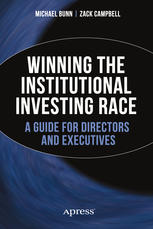

Most ebook files are in PDF format, so you can easily read them using various software such as Foxit Reader or directly on the Google Chrome browser.
Some ebook files are released by publishers in other formats such as .awz, .mobi, .epub, .fb2, etc. You may need to install specific software to read these formats on mobile/PC, such as Calibre.
Please read the tutorial at this link: https://ebookbell.com/faq
We offer FREE conversion to the popular formats you request; however, this may take some time. Therefore, right after payment, please email us, and we will try to provide the service as quickly as possible.
For some exceptional file formats or broken links (if any), please refrain from opening any disputes. Instead, email us first, and we will try to assist within a maximum of 6 hours.
EbookBell Team

0.0
0 reviewsThe complexity of investments continues to grow, and institutional pools of capital from endowments to pension funds are suffering from too much risk and not enough return. Yet managing these investments and creating and implementing governance structures are seldom an integral part of the organization’s core mission or its operations. "That’s the way it has always been," say many directors and executives. As a result, a board of directors or investment committee often believes it needs to make all the decisions--or outsource money management and hope for the best.
As Winning the Institutional Investing Race: A Guide for Directors and Executives makes clear, that sentiment is a big mistake that can lead to poor returns, reduced capital to employ on behalf of the organizational mission, and even charges of malfeasance on the part of directors. Authors Michael Bunn and Zack Campbell, who advise companies and institutions on best practices in institutional investment, are determined to help institutions and companies learn to manage their capital funds like the real businesses they are. This hands-on book will show you:
Besides governance, this book covers a wide array of investment topics—modern portfolio theory, risk application, investment manager evaluation and manager search, asset allocation, and diversification, among others—while introducing a new and successful approach to managing investment portfolios. The goal is to provide a grounding in investing for those involved in making financial decisions at the board level. As the authors make clear, it is not possible just to beat the averages but to do so consistently.
Winning the Institutional Investing Race: A Guide for Directors and Executives offers a healthy rethinking of investment management and governance for any organization or board that oversees institutional investments and manages those making investment decisions. Most important, it shows how directors and managers can maintain their fiduciary responsibilities to the organizations they serve while maximizing investment returns.